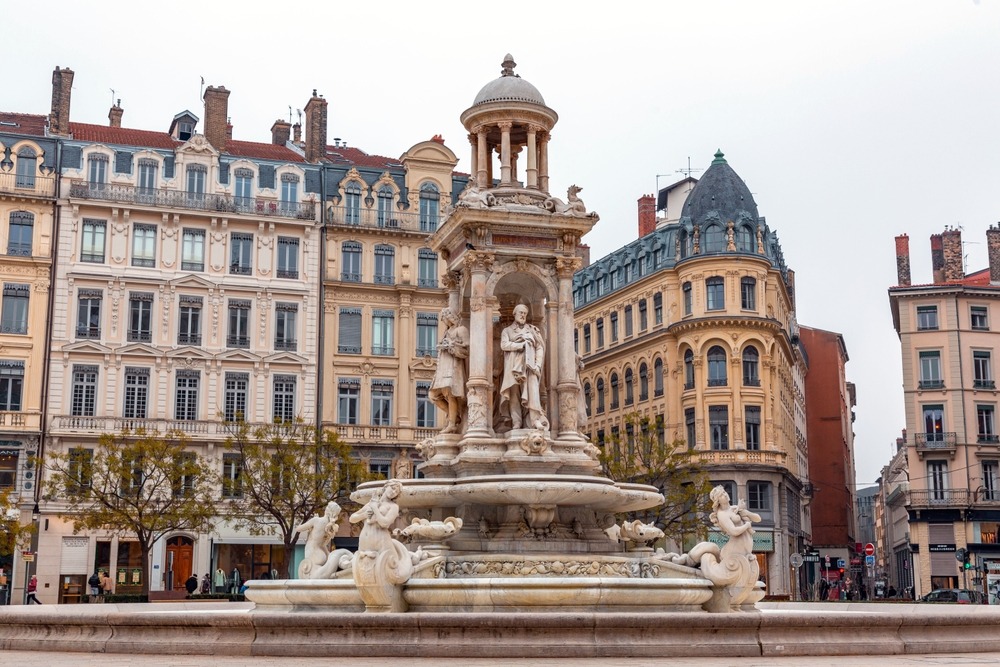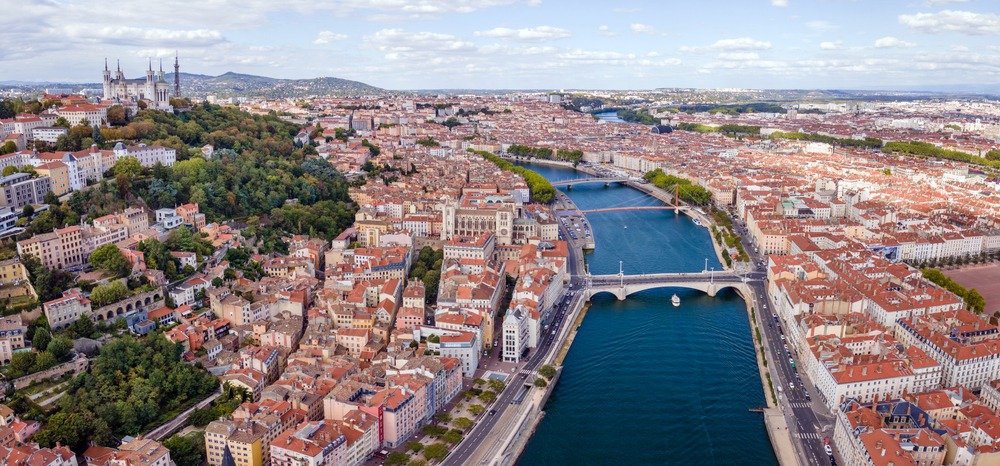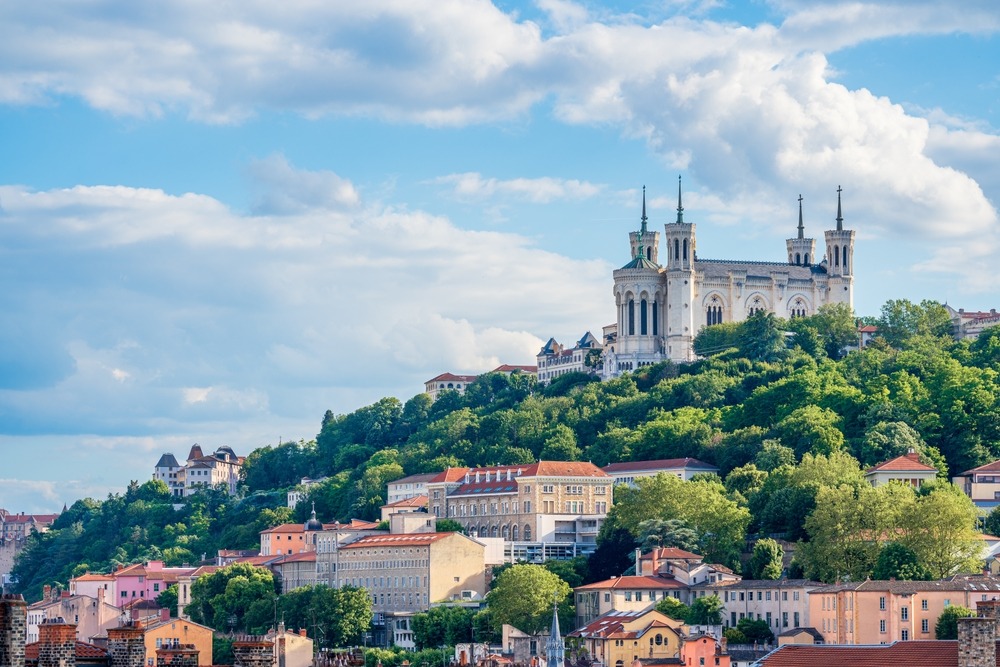Lyon, France: A Journey Through Time and Its Top 25 Attractions

A DETAILED HISTORY OF LYON
From Lugdunum to Lyon: Ancient Origins
Lyon’s roots trace back over two millennia to 43 BCE, when it was founded by Lucius Munatius Plancus, a lieutenant of Julius Caesar, under the name Lugdunum. Situated at the confluence of the Rhône and Saône rivers, Lugdunum became the capital of Roman Gaul and a major administrative, military, and trade hub. Its strategic location enabled rapid growth, and by the 2nd century CE, it was one of the most important cities in the Roman Empire outside of Italy. The city boasted aqueducts, an amphitheater, a forum, temples, and baths—many of which can still be seen today.
Christianization and Medieval Transition
Lugdunum was an early center of Christianity in Gaul. In 177 CE, it was the site of one of the earliest Christian persecutions, with St. Pothinus, the city’s first bishop, martyred alongside others. By the early Middle Ages, the city’s importance declined with the fall of Rome, but Lyon maintained influence through its religious institutions, especially its archbishopric, which became one of the most powerful in France.
During the Carolingian Empire, Lyon was a cultural and ecclesiastical beacon, contributing to theological debate and manuscript production. In the 12th and 13th centuries, it played host to the First and Second Councils of Lyon, further cementing its religious significance.
Renaissance Glory and Economic Expansion
The Renaissance ushered in a golden era for Lyon. Thanks to its location along major trade routes and the presence of Florentine banking houses, it became a flourishing center for commerce, silk production, and printing. By the 16th century, Lyon was known as the silk capital of Europe, and the traboules—hidden passageways throughout the city—emerged as a way for silk workers to move goods efficiently. The city also became a cultural hub, attracting humanists, artists, and writers.
17th–18th Centuries: From Royal Power to Revolution
In the age of absolutism, Lyon remained vital to the French monarchy due to its economic and strategic importance. However, during the French Revolution, the city rose up against the Jacobins and faced brutal repression in 1793. Revolutionary forces devastated parts of the city, executing many of its leaders and damaging historic structures.
19th Century Industrialization and Silk Workers’ Rebellions
The 1800s brought rapid industrial growth, with Lyon remaining at the forefront of the silk industry. However, working conditions were harsh, leading to the Canut revolts—early worker uprisings by silk weavers in 1831 and 1834. These were among the first labor movements in modern European history and laid the groundwork for social reforms.
World War II and Resistance
During World War II, Lyon was a major center of the French Resistance against Nazi occupation. The city’s geography made it difficult to control, and it became a stronghold for underground activity. The Gestapo, led by Klaus Barbie (“The Butcher of Lyon”), brutally attempted to suppress resistance efforts. Lyon was later honored as a Ville de la Résistance and continues to commemorate this courageous chapter.
Modern Lyon: UNESCO Recognition and Cultural Renaissance
Today, Lyon is France’s third-largest city and a thriving cultural, educational, and economic center. Its historic center was designated a UNESCO World Heritage Site in 1998, and the city is internationally renowned for its gastronomy, vibrant festivals, and innovation in sectors ranging from biotech to cinema.

TOP 25 ATTRACTIONS IN LYON
1. Vieux Lyon (Old Lyon)
This Renaissance district is one of the largest of its kind in Europe, with cobblestone streets, Gothic and Italian-style architecture, bouchons (local restaurants), and vibrant courtyards. It’s a living museum of 15th- to 17th-century Lyon.
2. Basilica of Notre-Dame de Fourvière
Perched high above the city, this ornate 19th-century basilica combines Romanesque and Byzantine styles. It offers panoramic views of Lyon and is a pilgrimage site dedicated to the Virgin Mary.
3. Fourvière Hill and Roman Theaters
Once the heart of Lugdunum, this area includes the Grand Roman Theatre (1st century BCE) and the Odeon. These well-preserved sites host concerts and cultural events today.
4. Lyon Cathedral (Cathédrale Saint-Jean-Baptiste)
A Gothic cathedral built between the 12th and 15th centuries, famous for its 14th-century astronomical clock, intricate stained glass, and Romanesque apse.
5. Traboules of Lyon
These secret covered passageways run through buildings and courtyards, connecting streets. Originally used by silk workers, they now offer a mysterious and beautiful way to explore the city.
6. Musée des Confluences
A strikingly modern science and anthropology museum located at the confluence of the Rhône and Saône rivers. Its futuristic architecture and immersive exhibits make it a must-see.
7. Presqu’île District
Located between the rivers, this district features elegant 19th-century architecture, upscale shopping, cafés, and theaters. Highlights include Place Bellecour and Rue de la République.
8. Place Bellecour
One of the largest public squares in Europe, this iconic space features a statue of Louis XIV, seasonal events, and direct access to many of Lyon’s key attractions.
9. Parc de la Tête d’Or
A vast urban park with a botanical garden, zoo, boating lake, and rose garden. It’s a family favorite and a peaceful escape in the middle of the city.
10. Croix-Rousse District
Historically the neighborhood of the Canuts (silk workers), it features bohemian flair, murals, and creative spaces. The Maison des Canuts tells the story of Lyon’s silk legacy.
11. Mur des Canuts (Canut Wall)
A giant trompe-l’œil mural depicting the life of silk workers and the history of the Croix-Rousse district. It’s one of the largest murals in Europe.
12. Musée des Beaux-Arts de Lyon
Housed in a former abbey, this is one of France’s premier fine arts museums, with works by Monet, Rembrandt, Picasso, Rodin, and Egyptian antiquities.
13. Lyon Opera House (Opéra Nouvel)
A 19th-century opera house remodeled with a contemporary dome by architect Jean Nouvel. It offers world-class performances in opera, ballet, and classical music.
14. Hôtel de Ville (City Hall)
A magnificent baroque building from the 17th century located in Place des Terreaux, next to the fine arts museum.
15. Place des Terreaux
A beautiful square framed by historic architecture and featuring the Bartholdi Fountain, designed by the same sculptor behind the Statue of Liberty.
16. Institut Lumière
Located in the family home of the Lumière brothers, this museum is dedicated to the invention of cinema. Lyon is where the first motion picture was screened in 1895.
17. Les Halles de Lyon Paul Bocuse
Named after the legendary chef, this indoor gourmet food market offers the best of Lyonnaise cuisine, including charcuterie, cheeses, wines, pastries, and more.
18. Rue Saint-Jean
The main artery of Vieux Lyon, this lively pedestrian street is full of restaurants, boutiques, and architectural treasures from the Renaissance era.
19. Saint-Paul Church and Quarter
An atmospheric neighborhood with medieval architecture, art galleries, and a scenic riverfront. The Église Saint-Paul itself dates to the 10th century.
20. Lyon’s Riverside Quays (Les Berges du Rhône)
Modernized riverbanks ideal for walking, cycling, or enjoying open-air cafes and floating bars known as péniches.
21. Basilica of Saint-Martin d’Ainay
A Romanesque masterpiece from the 11th century, one of the oldest surviving churches in Lyon, built on the site of a Roman temple.
22. Confluence Shopping and Entertainment Complex
A sleek development with shops, a cinema, and restaurants, offering views of the river confluence and cutting-edge modern design.
23. Musée Gadagne
Home to both the Museum of Lyon’s History and the Museum of Puppetry Arts, housed in a Renaissance mansion in Vieux Lyon.
24. Théâtre des Célestins
A neoclassical theater with a stunning interior, offering an eclectic program of drama, dance, and French cultural productions.
25. La Croix-Rousse Market
One of the city’s best open-air markets, offering local produce, Lyonnais specialties, and a vibrant slice of everyday life.

Lyon is a city where history breathes from every stone and innovation pulses through its veins. From Roman amphitheaters and secret passageways to avant-garde museums and culinary mastery, Lyon offers a kaleidoscope of experiences. Recognized for its role in shaping European culture—from early Christianity and Renaissance trade to cinema and gastronomy—Lyon is not merely a stop between Paris and the Riviera; it is a destination all its own, inviting visitors to explore its deep past and dynamic present.
Lyon, France: A Journey Through Time

































